Learn these techniques to stay safe on snow-covered roads.
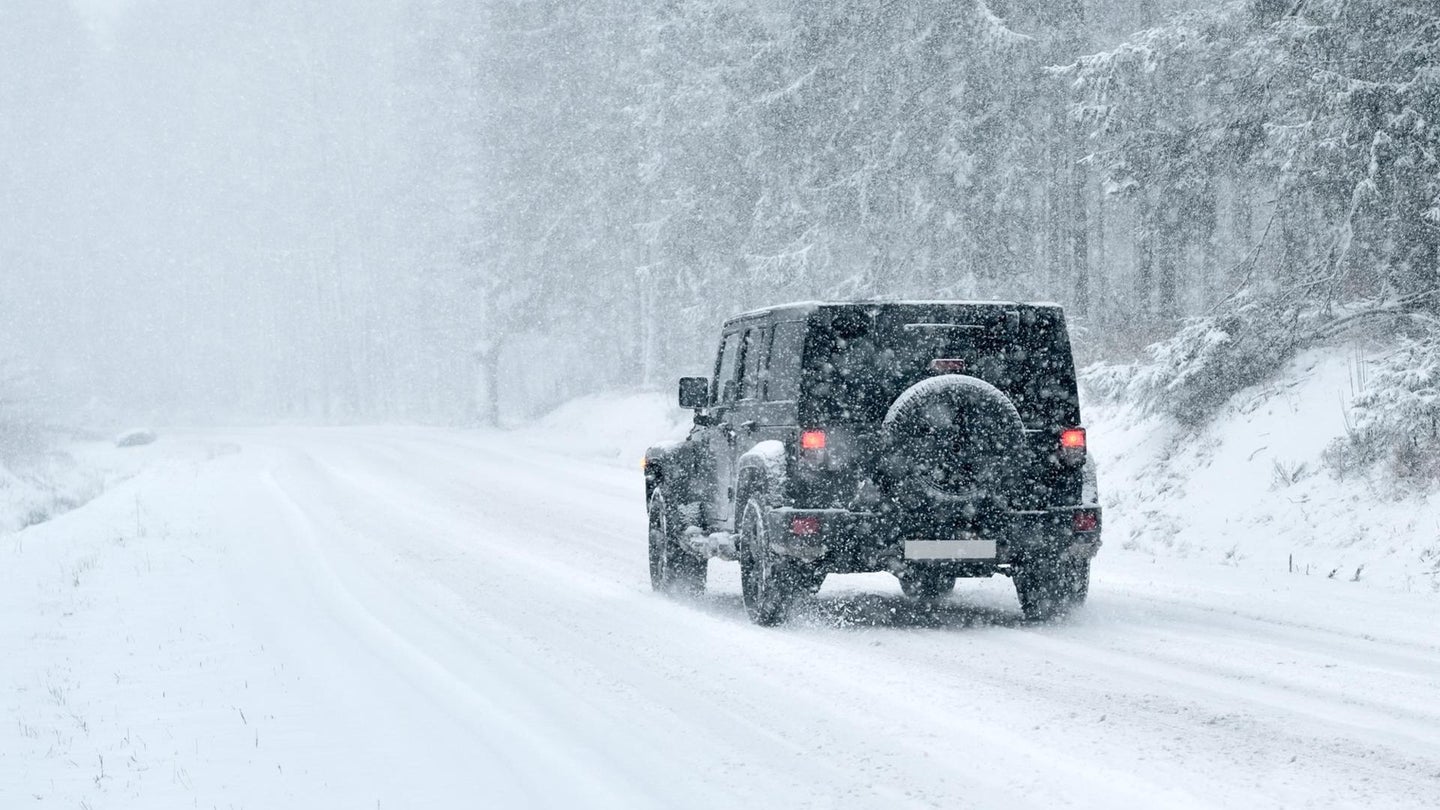
We may earn revenue from the products available on this page and participate in affiliate programs. Learn more ›
So you want to be a rally driver? Wait, that’s not the question you asked, but it does somewhat touch on the subject of how one safely drives through snow. As most aren’t trained World Rally Championship racecar drivers, no matter how awesome your car may be, learning the proper methods of driving in snow can help avoid accidents, ditches, and the odd deer.
Especially for those experiencing all the snow on the West Coast as of late. It’s seemingly not stopping, despite the East Coast being almost snow-free.
Suffice it to say, you can’t just slap on some winter tires and hope for the best, let alone entrust your safety purely to your car’s all-wheel drive, you need to understand oversteer and understeer, how to catch a slide, and why winter tires are a solid investment. Here’s how to drive in snow and set you up for success when Mother Nature throws a blizzard at you.
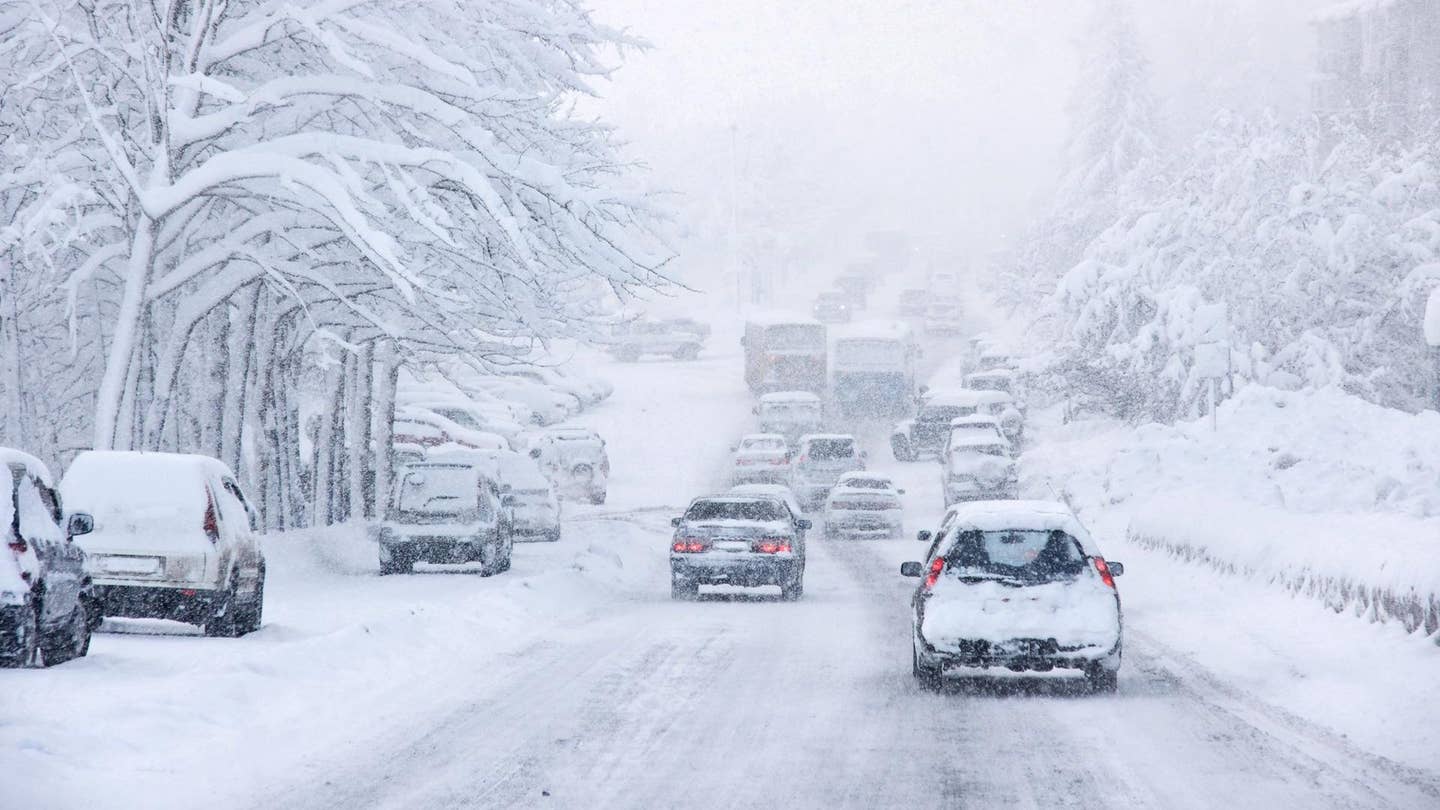
Depositphotos
Safety
Driving your car through snow can be dangerous, putting your life and the lives of others at risk. So as you don’t die, get maimed, or lose a toe to frostbite, here’s exactly how to learn how to drive through snow safely—hopefully.
- Find an unplowed deserted parking lot.
- Find someone who’s comfortable driving in snow.
- Winter tires.
- Comfortable clothing that won’t inhibit driving.
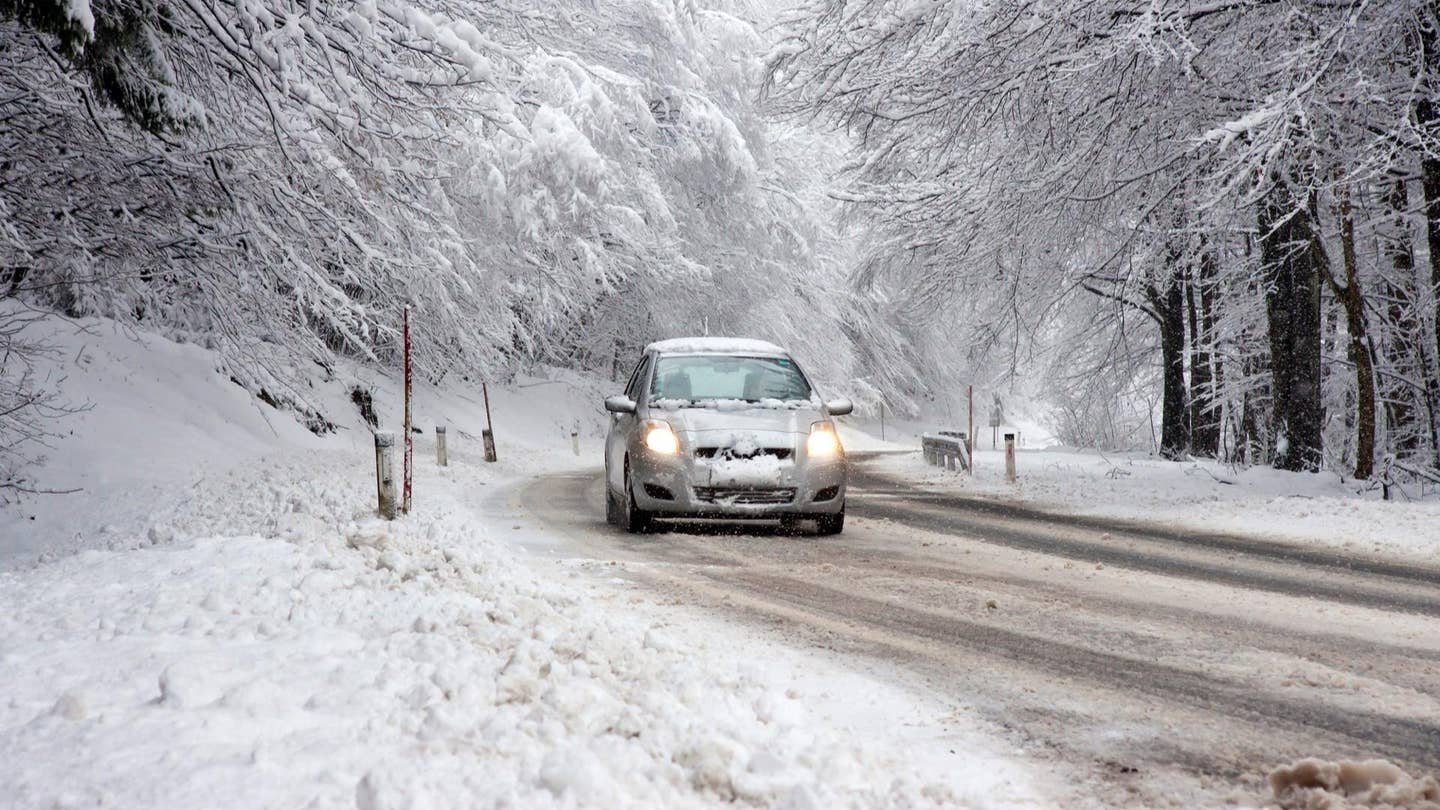
Depositphotos
Setting Up Your Car
Before ever setting off, replace your normal tires with winter-spec units. Winter tires are an often overlooked, underutilized part that does far more for you winter safety than any four-wheel drive system ever. With specialized grooves that help the tires bite into the snow, as well as wick away water and ice, winter tires can afford you better acceleration, more grip, and slightly better braking in slippery conditions.
Finding a comfortable seating position is also important, as if you aren’t comfortable, you won’t be able to make the steering, gas, and braking changes easily or confidently and are likely to cause exactly what you were hoping to avoid, i.e. having to call your parents, significant other, and the local tow guy to explain why your 2005 Toyota Corolla now resembles a piece of interpretive art.
Here are our suggestions for making your life easier.
Set your seat height, position, and steering column to comfy settings. No, not leaned so far back your head touches the rear seats. Upright and looking forward.
Now turn off your radio—you don’t need the distraction of Trans-Siberian Orchestra blasting as you attempt to turn in a foot of snow. Before setting off, look around and note where potential hazards are lurking, such as light poles, curbs, and/or other humans. Finally, make sure your seatbelt is on.
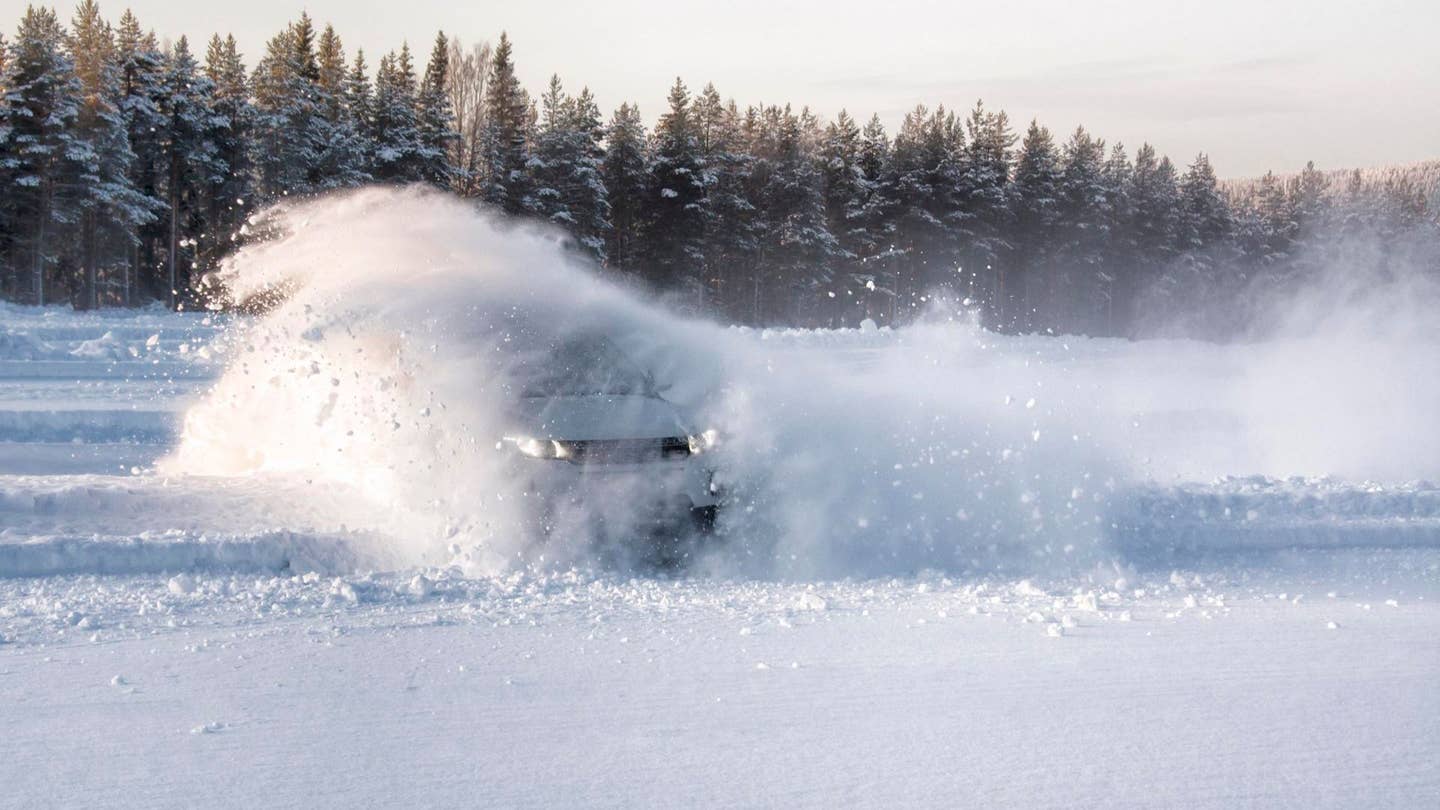
Here’s how to not end up like this., Depositphotos
Here is How to Safely Drive Through Snow
What is Understeer/Oversteer?
Before we get into the nitty-gritty of driving through Snowmageddon, you need to know what understeer and oversteer are. Both terms concern your car’s cornering dynamics, with oversteering being the more readily known of the two.
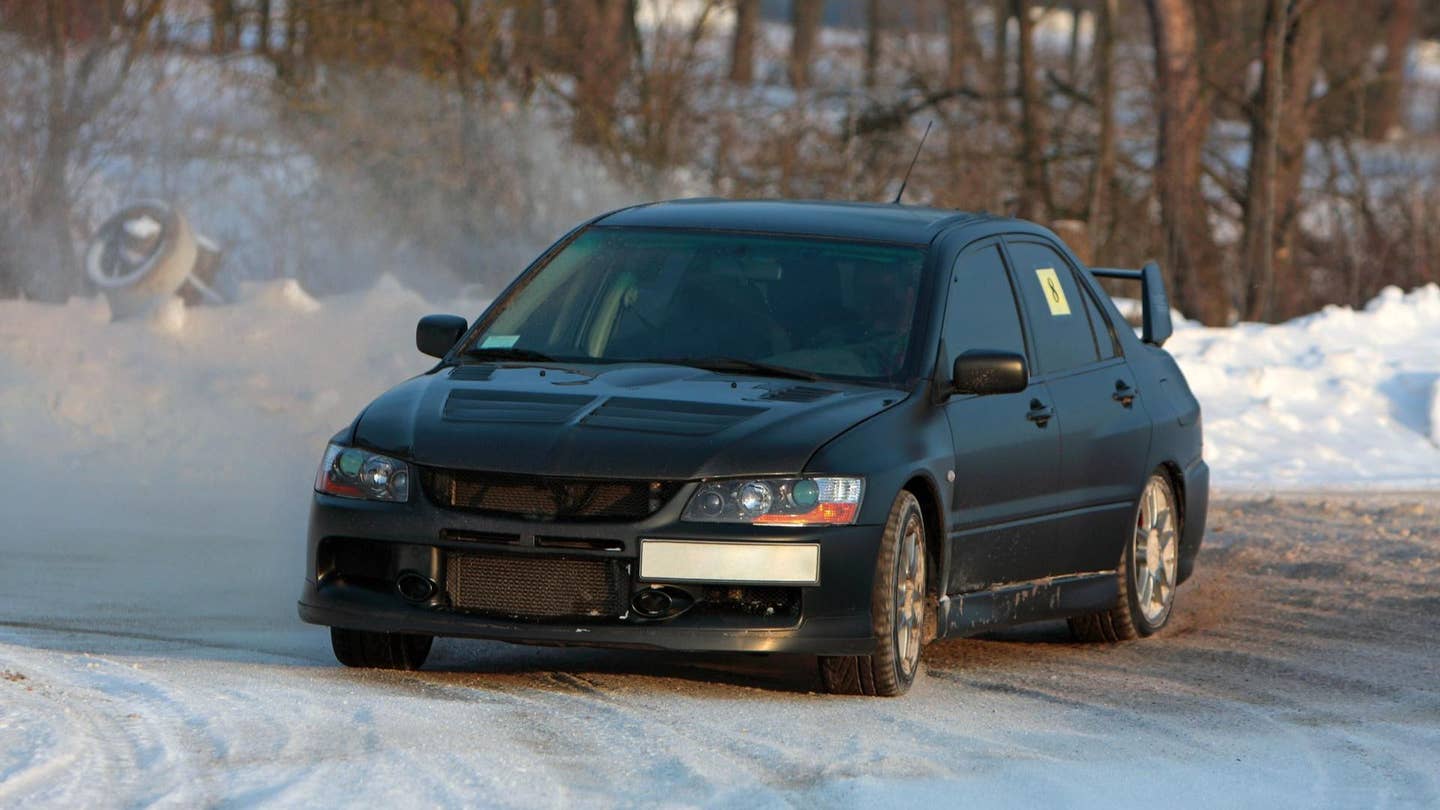
Oversteer, Depositphotos
Picture any modern car chase as the bad guy runs from the police and slides the rear of their car, its tires billowing smoke from their lack of traction. That is oversteer or more precisely, oversteer occurs when the rear of the car loses traction and the rear slides sideways. The same dynamic happens in winter, though likely not trying to look perfectly quaft for cameras, but because you took a corner too quickly. Rear-wheel drive cars are more prone to oversteer as it’s easier to break the tire’s traction.
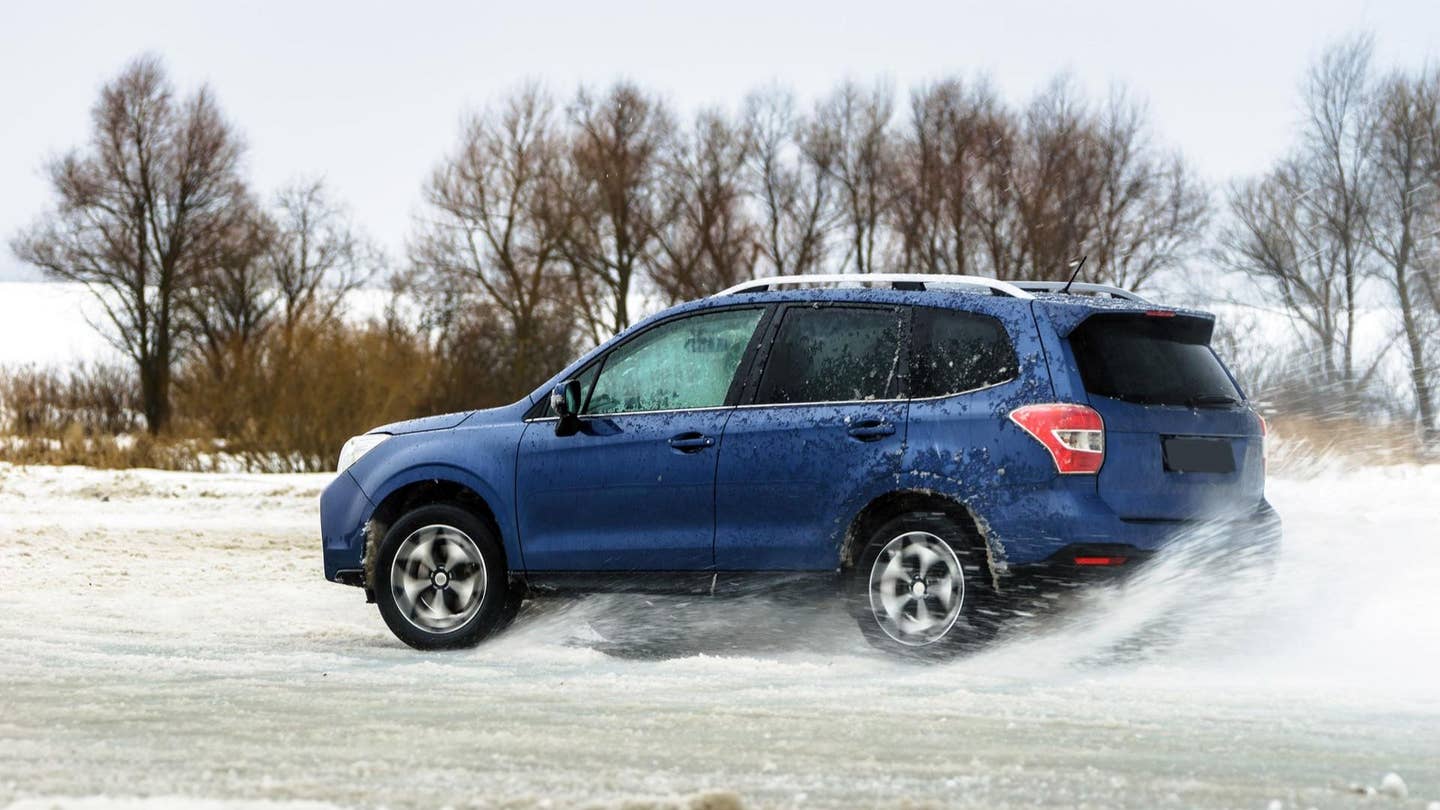
Understeer, Depositphotos
Understeer deals with the opposite end of the car at the front and speed plays a large part in its occurrence. When approaching a turn too quickly, a driver will turn the wheel in an attempt to make the corner, but because they’re going too quickly, the front wheels can’t grip, break traction, and though the tires are turned in the direction of travel, you continue forward. That’s understeer. In snowy conditions, this may occur even when you aren’t speeding, though speed will increase its likelihood.
Now that you know what understeer and oversteer are, let’s go driving!
Turning
- Aggressive maneuvers are out of the picture here. You’re not on a racetrack with sticky tires, so your sharp directional change isn’t going to happen. What you want to do is smoothly, but deliberately, make your directional change.
- Slow down, there’s no prize at the end of the corner. Slowing your speeds enables your winter tires to find more grip and give you a better chance of making it out the other end.
- Brake before the turn. Braking mid-corner can upset the car and spin you off into a ditch. If you get your braking done before the corner while you’re still traveling in a straight line, you have more braking power and less of a chance to upset the car.
- Do not touch the accelerator pedal while in a turn. Like braking midway through, accelerating can make the car unstable.
Braking
- Easy does it, partner, quick jabs, slams, and panicked application will upset the car’s dynamics, potentially causing you to spin or lose control. Being smooth and lightly modulating the brake pedal, feeling for the ABS’s stuttering to determine how much more, or how much less, input is needed. If it’s stuttering like a .25 cent Ride’em, Cowboy! motel bed, back off. If it’s steady and smooth, you can apply a little more force until you reach a stop.
Accelerating
- Just like braking, smoothness and a light touch is everything when it comes to accelerating in snow. You can’t just stomp on the accelerator, you have to feather it so the tires have a chance to grip the snow and ice.
Putting It All Together
- There’s no need to go above and beyond the speed limit and if you go slightly slower, you’ll have more time to react to obstacles, impediments, other drivers not paying attention or believing they’re driving gods even while they skid into a ditch.
- Give yourself extra space between you and others. It adds distance and gives you additional time to slow down.
- Look ahead, don’t keep your eyes focused on what’s just in front of the car. If you see an accident a few car lengths up, you’ll have more time to react.
- Practice makes perfect. Whenever you get a chance to go and practice safely, do so. The more you understand what to feel for, the more likely you are to know how to counter it and come out the other side safely.
You did it!
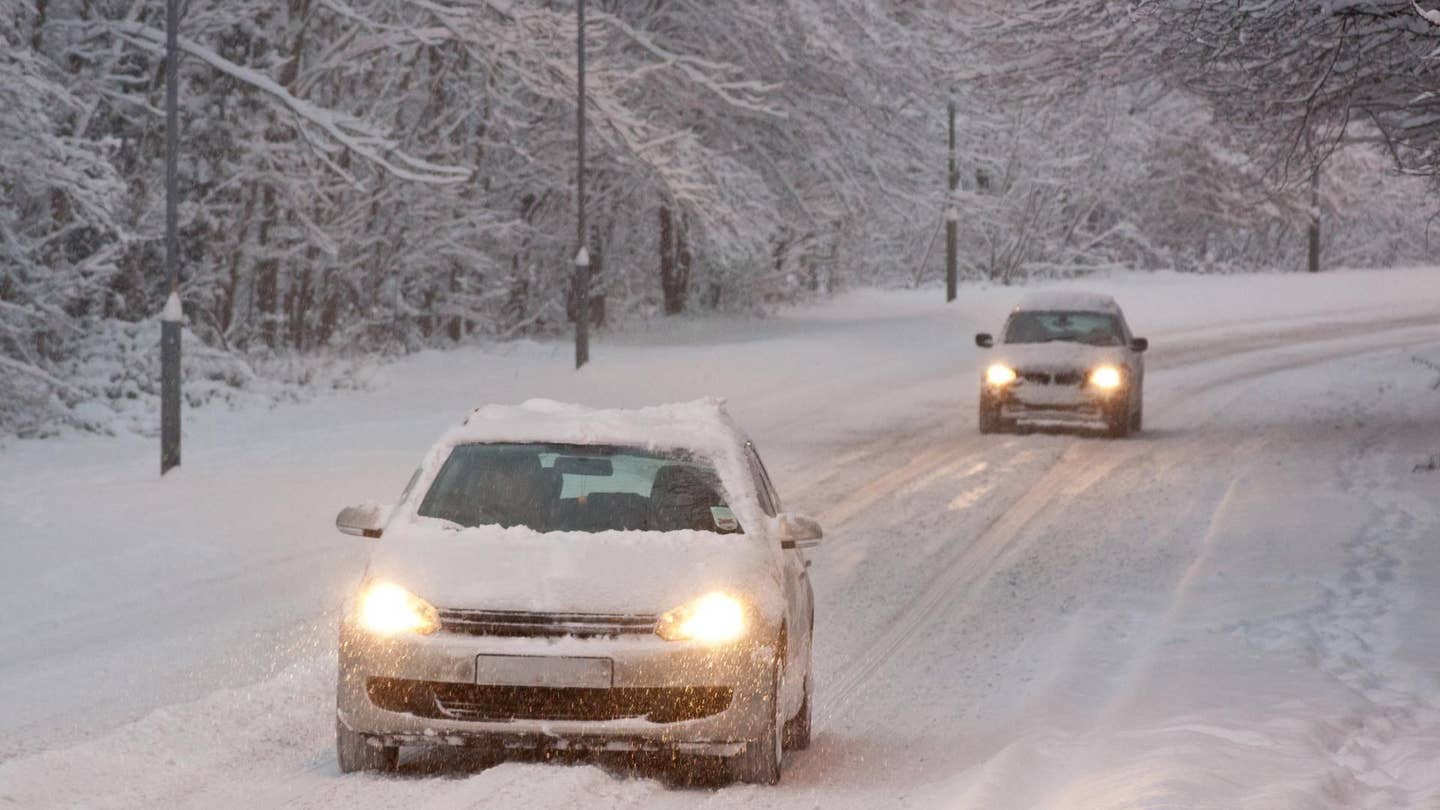
Depositphotos
Tips From a Pro
Over the years, The Drive’s editors have made friends with professionals across the industry. For this specific task, we asked our friend Trevor Wert, who used to be one of the instructors at DirtFish Rally School in Snoqualmie, Washington, to give us his top tips for safely driving through the snow. You’ll want to pay attention.
Look Up
The one thing that I personally focus on very heavily at DirtFish is having good vision, but it’s even more important when you’re driving in the snow. One of the amazing things about the human body is that we naturally adjust what we’re doing based on what we’re focused on, including looking where you want to go. Naturally, your body will do everything it needs to make it there, so whatever you do, DO NOT look at the object you’re trying to avoid, you will hit it.
Slow Down
Slow down! Slippery conditions increase the amount of time and distance it takes to stop and/or slow. There is less available traction for your car to stop, turn, and accelerate, so any inputs while on snow and/or ice will take much longer than even in the rain. Slowing down allows time to process situations, reduces a vehicle’s tendency to continue straight, and if nothing else, limits how long it takes to stop.
Leave Extra Room
As we all know, driving in slippery conditions is unpredictable. If we know that it takes longer to slow down, then we also know that it doesn’t leave a lot of room to stop or turn. If we approach an intersection or follow a car at the same distance that we would in the dry, we don’t leave ourselves the option of slowing, stopping, or turning if the unexpected happens.
Don’t panic
For most drivers, if a slide happens it’s often an unpleasant experience (unless you’re at DirtFish, we love it!). This causes a situation of either “freezing” or overreacting, and unfortunately, neither ends well. By remaining calm, a driver is able to think clearer and find ways to fix the situation rather than make things worse. Ultimately, the best situation is to not get into trouble in the first place by following the first two recommendations.
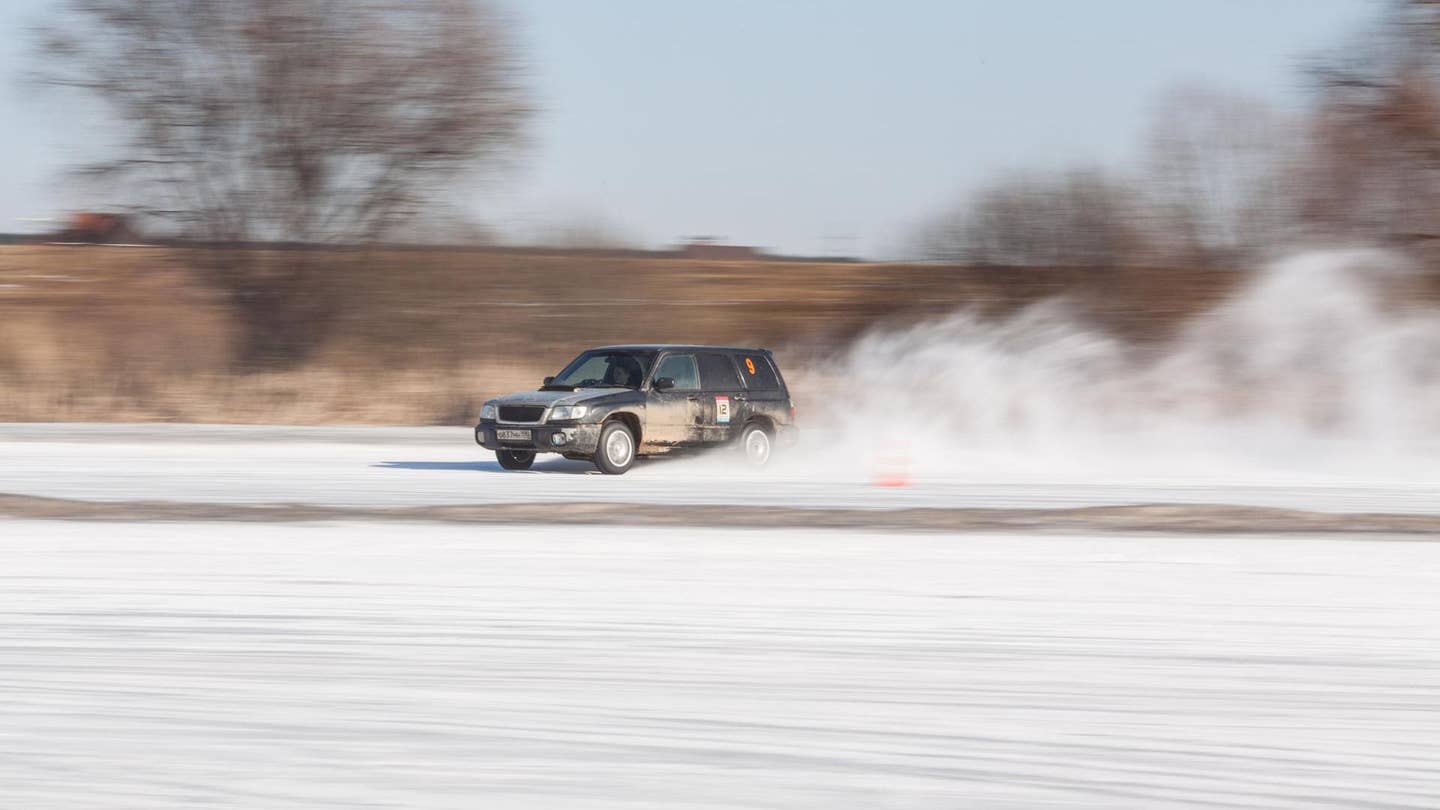
Depositphotos
What About When Your Car Slides?
To take a line from Trevor, as well as one of the greatest novels of all time, Hitchhiker’s Guide to the Galaxy, “Don’t Panic.” Don’t brake, don’t hit the gas, don’t freak out. If your car is oversteering, look where you want to go, steer into the slide, and finally, lightly feather the throttle until the car returns to pointing forward. If your car is understeering, continue looking where you want to go, lift off the gas, gently apply the brake, lift off the brake, and attempt to turn again. If your car doesn’t immediately turn, you may need to decrease your speed further.
What If You Encounter a Whiteout?
Pull over, your life isn’t worth Taco Bell.
How Do I Become a Rally Driver?
Go to DirtFish, take their classes, get points toward your rally license, and then build yourself a rally car!
Video
And here’s it all put together with one of DirtFish’s awesome school Subaru WRX STI rally cars! Take a look.
The Drive and its partners may earn a commission if you purchase a product through one of our links. Read more.
More from The Drive










